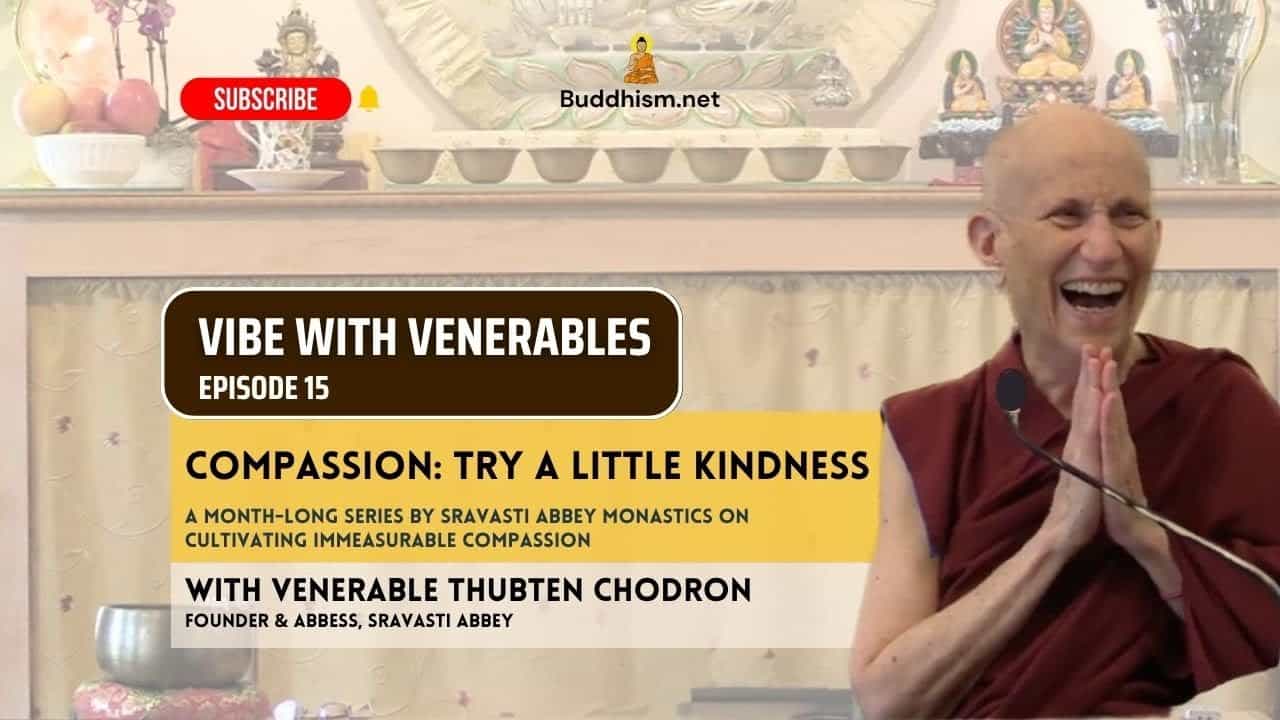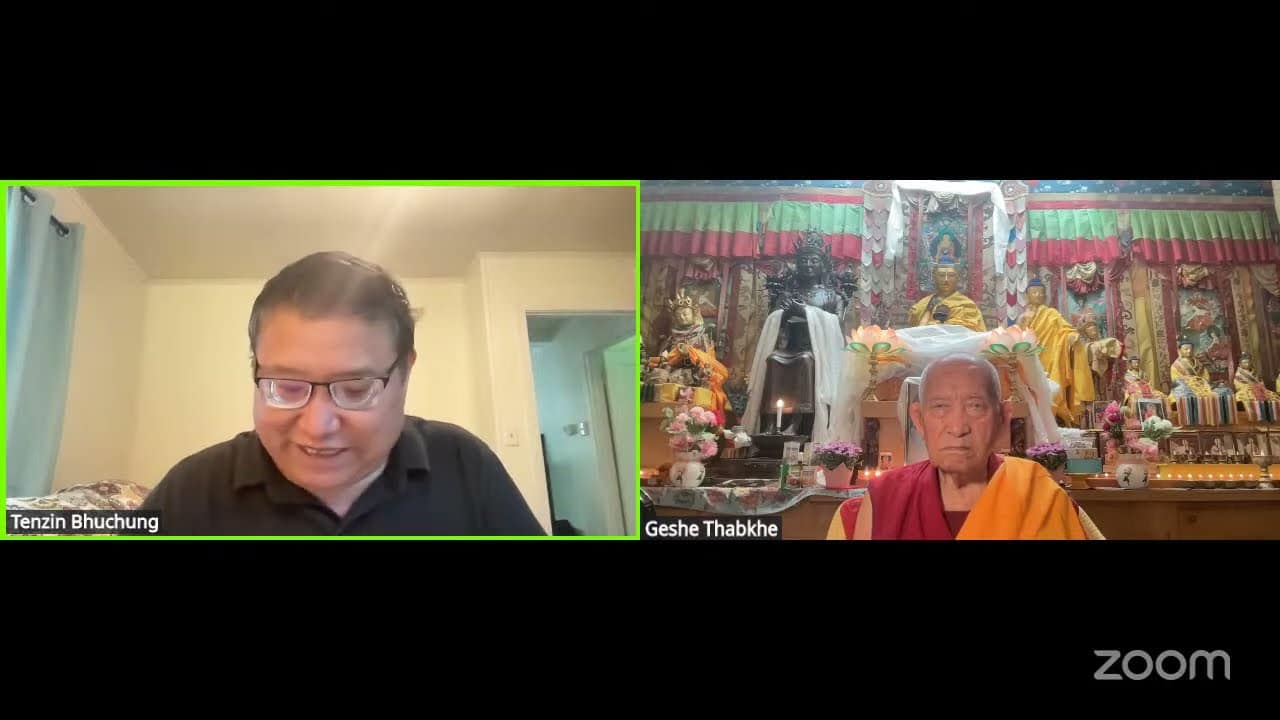First two of Maitreya’s five faults
60 Following in the Buddha's Footsteps
Part of an ongoing series of teachings based on the book Following in the Buddha's Footsteps, the fourth volume in The Library of Wisdom and Compassion series by His Holiness the Dalai Lama and Venerable Thubten Chodron.
- Not holding on to the past and not dwelling in the future
- Relinquishing attachment and sensual desire for present forms of individual existence
- Five faults and eight antidotes
- Three types of laziness
- Faith or confidence, aspiration, joyous efforts and pliancy
- Forgetting the object of meditation
- Mindfulness to bring the mind back to object of meditation
60 First Two of Maiterya’s Five Faults (download)
Contemplation points
- What does it mean to “abandon what lies in the past, in the future, and in the present?” What are you clinging onto in the past, present, and future that would be beneficial to put down / give up?
- To function in society, we need to remember what we have learned in the past, to plan for the future, and to act in the present. Surely the Buddha is not instructing us to do nothing. How do we integrate his advice to abandon what lies in the past, present, and future with being an effective person, like he himself was? What would that look like in your own life?
- The first of the five faults is laziness. What are the three types of laziness? How does each interfere with the development of serenity? The actual antidote to laziness is pliancy. What is pliancy? Since pliancy takes time to strengthen in our minds, what three additional antidotes are we encouraged to practice that help lead our minds towards pliancy? How do these three supporting antidotes build upon each other as we practice them?
- The second of the five faults is forgetting the instruction (forgetting the meditation object). In other words, we sit on the meditation cushion and try to concentrate, but our untrained mind quickly strays from the observed objects to objects of attachment, anger, jealousy, and worry. Make examples of this from your own meditation. What is the antidote to forgetting the meditation object and how do we employ it in our meditation?
- Ethical conduct is a precursor to serenity because it develops mindfulness in daily activities. Whether we are walking, standing, sitting or lying, we must maintain mindfulness of our precepts and of suitable behavior for that situation. How does this help us be mindful of our meditation object in our serenity meditation?
Venerable Thubten Chodron
Venerable Chodron emphasizes the practical application of Buddha’s teachings in our daily lives and is especially skilled at explaining them in ways easily understood and practiced by Westerners. She is well known for her warm, humorous, and lucid teachings. She was ordained as a Buddhist nun in 1977 by Kyabje Ling Rinpoche in Dharamsala, India, and in 1986 she received bhikshuni (full) ordination in Taiwan. Read her full bio.


